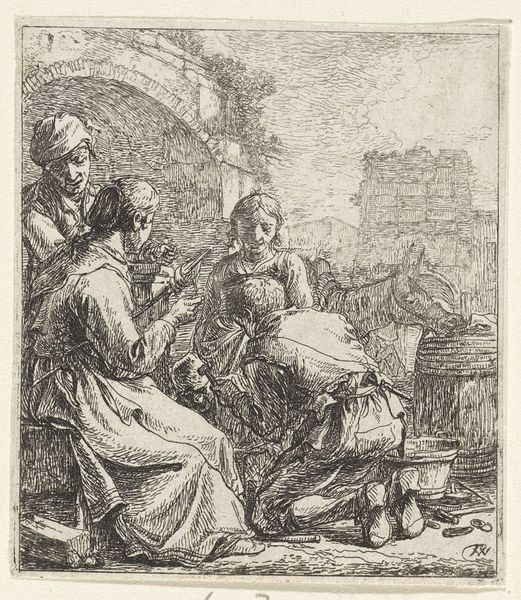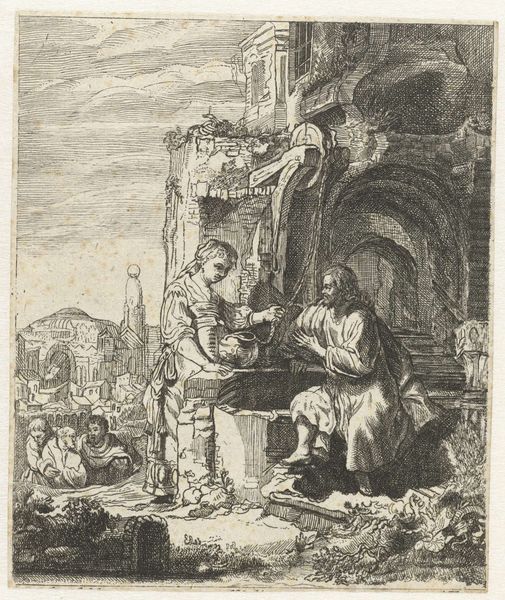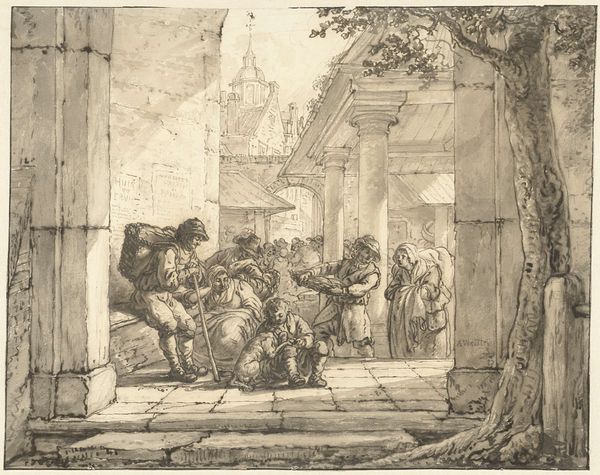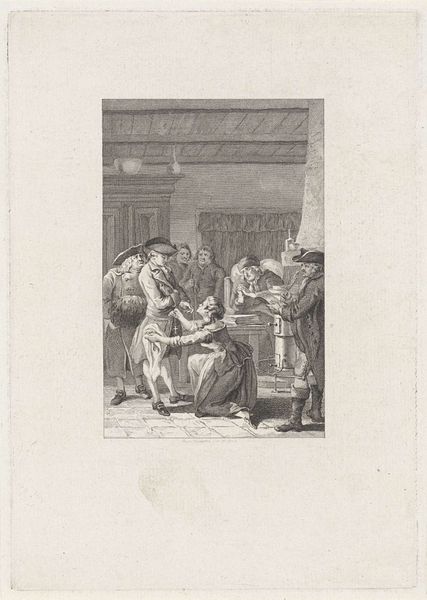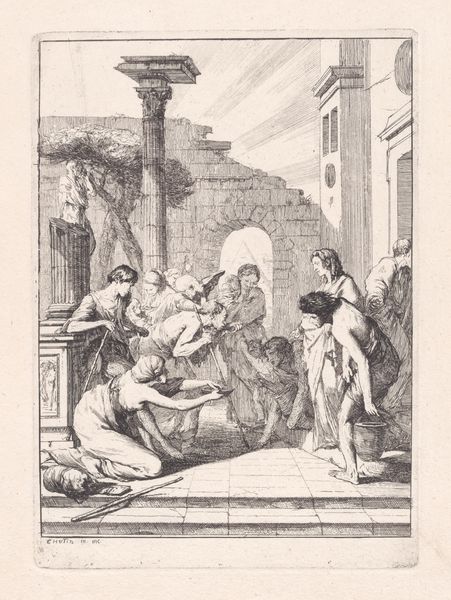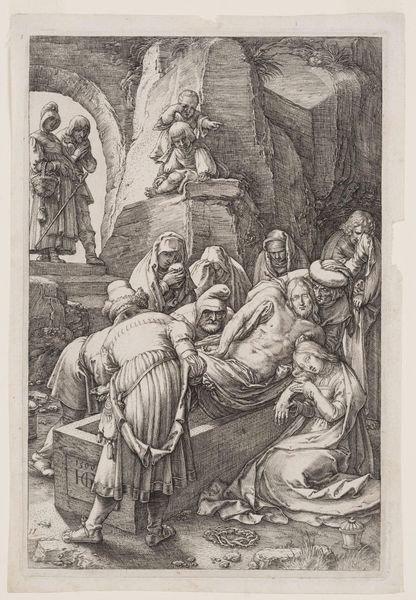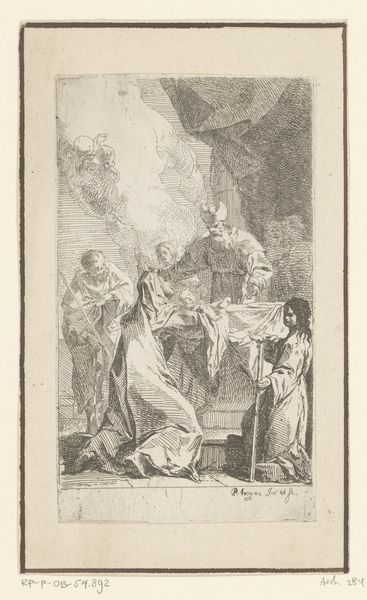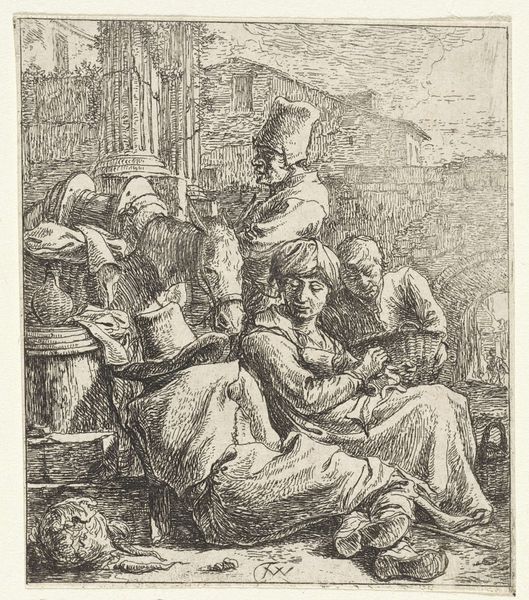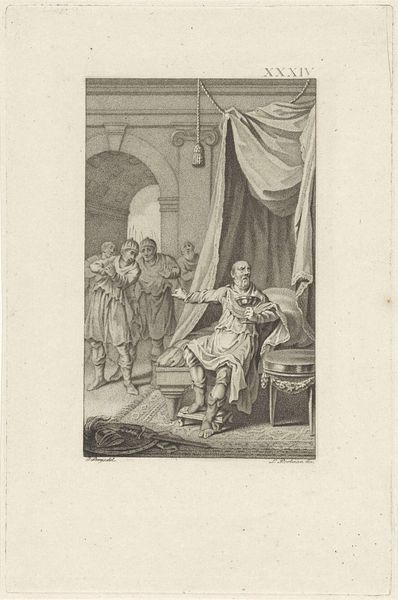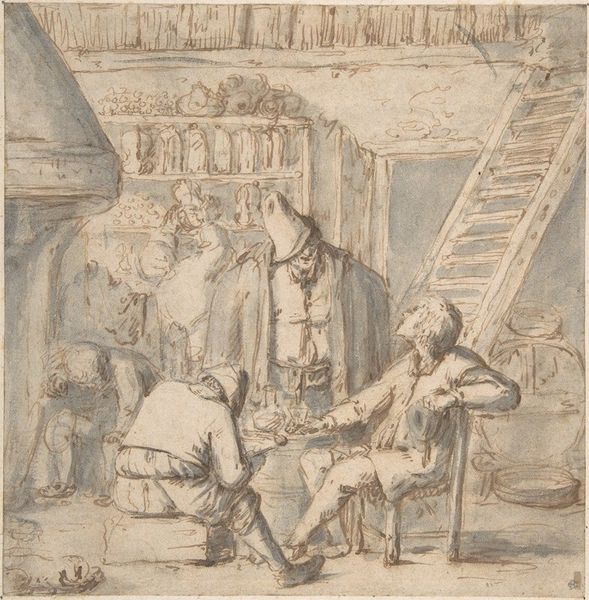
print, etching
#
portrait
#
dutch-golden-age
# print
#
etching
#
figuration
#
genre-painting
Dimensions: height 117 mm, width 109 mm
Copyright: Rijks Museum: Open Domain
Editor: This etching, "Two Merchants in a Warehouse," by Thomas Wijck, made sometime between 1626 and 1677, depicts two men surrounded by various goods. There’s almost a stage-like quality to the setting. What’s your take on this piece? Curator: Well, from a materialist perspective, it’s interesting to consider what this etching reveals about Dutch trade and the means of production in that era. Think about it: etching itself is a specific technology, requiring skill, tools, and materials like metal plates and acid. And the warehouse depicted isn't just a space, it is a crucial site for the storage and distribution of goods that passed through global trade networks. Editor: That's true, I hadn’t really considered the etching process itself. The warehouse definitely hints at larger systems. How does the depiction of labor factor in? Curator: Precisely! Notice how the figures are positioned among barrels, boxes, and bundles. These objects speak volumes about the unseen labor that made this all possible, reflecting complex relations of production and consumption. Editor: The contrast in clothing between the men is pretty striking. What might this say about the cultural exchange happening? Curator: Absolutely, consider the material culture on display here. The fabrics, styles, and artifacts present give us hints as to where these commodities come from, the global networks connecting the Dutch Republic with faraway places. Also, note the artist’s labor; how does the making of this print itself feed into systems of patronage and market demand? Editor: That makes me see the piece so differently now. It's like looking at a document of global exchange frozen in time, thanks to the materials used. Curator: Indeed, and reflecting on those materials, it encourages us to interrogate who profits, who labors, and what's truly being exchanged beyond the mere objects themselves.
Comments
No comments
Be the first to comment and join the conversation on the ultimate creative platform.
